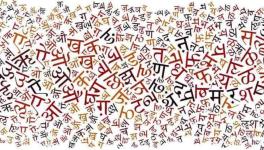The Political Beneficiaries of the Cauvery Water Dispute

Image courtesy: Deccan Chronicle
The Cauvery Water Management Authority (CWMA) on July 2, 2018, has directed Karnataka to release 34 tmcft of water to Tamil Nadu for the month of July. The Supreme Court of India in its verdict on February 16, 2018, had ruled that Karnataka will get 284.75 tmcft, Tamil Nadu- 404.25 tmcft, Kerala 30 tmcft and Puducherry 7 tmcft, and had directed the centre to notify the Cauvery Management Scheme. As per the Court’s order, the centre notified the setting of CWMA. However, neither of these developments have put an end to the interstate water dispute between Karnataka and Tamil Nadu. As far as Karnataka is concerned, Cauvery remains to be a political entity -- with political parties in both these states -- holding highly partisan positions on the river that flows across these states.
Also Read: Cauvery Protests Intensify in TN, Farmers demand Cauvery Management Board
The Chief Minister H D Kumaraswamy called for an all-party meeting on June 30, 2018, to plan the state’s “next move” on the Cauvery issue. In this meeting, the Karnataka government decided to appeal to the Supreme Court against setting up of CWMA and Cauvery Water Regulation Committee (CWRC). At present, Karnataka is the sole hold-out State, with all other States having accepted the Court judgement and constitution of the CWMA.
The state is demanding the issue be dealt with in the parliament. The Authority is representative of all the states whose stakes are involved: It is comprised of Tinku Biswal the secretary of water resources of Kerala, S K Prabhakar of Tamil Nadu, A. Anbarasu of Puducherry and Rakesh Singh of Karnataka along with the representatives of the Central Water Commission and Union ministers of Agriculture and Water Resources. The Authority and Committee would meet once in 10 days during the monsoon months in the state and based on the Supreme Court’s verdict will recommend how much water ought to be released.
On what grounds have the Government of Karnataka decided to appeal to the Supreme Court? Also, why take up the issue in Parliament? Why is it reluctant to follow the directives of CWMA and CWRC set up based on the Supreme Court’s decision? The decision taken in the “all-party” meeting clearly shows the political interest that all the parties in the state have in the Cauvery dispute.
Political waters of Cauvery
Hemavathy, Harangi, Krishnarajasagar, Kabini, Muttur, Bhavanisagar, Amaravathy and Banasura Sagar are the main reservoirs that the state has. These reservoirs store Cauvery Water and release it as and when required. If the issue is of deciding the quantity of water that each of these states would get, the Supreme Court’s verdict and, CWMA and CWRC have provided the solution. Clearly, that is not the issue. Let us step back and look at the major developments in the dispute over the years.
The total catchment of the Cauvery basin is 81,155 sq.km of which the catchment of the river in Karnataka is about 34,273 sq. km that in Kerala is about 2,866 sq. km and the remaining area of 44,016 sq. km in Tamil Nadu and Puducherry. Based on the sizes of the catchment area the Government of India on 2nd June 1990 set up the Cauvery Water Disputes Tribunal (CWDT). The tribunal was to adjudicate the water dispute regarding inter‐state river Cauvery and the river basin among the States of Tamil Nadu, Karnataka, Kerala and Puducherry. In February 2013, The Cauvery Tribunal’s order of February 2007 was passed.
It was decided that in December 2013, Tamil Nadu will receive 12 tmcft of water and the issue broke out yet again when in the following proceedings of the tribunal, it was decided that Tamil Nadu will be receiving 1.51 tmcft of water. Tamil Nadu, filed an application in Supreme Court demanding 12 tmcft of water to save its standing crops and meet drinking water requirements. But Karnataka argued that it cannot release that much of water, so as to fulfil its drinking water requirements during remaining four months i.e. February to May, due to the lack of water in its four reservoirs
The dispute that started in the 1970s still stands unresolved. As late Ramaswamy Iyer explains, “a mutual alliance or resolution of the conflict rather than adjudication would be much better in the cases of disputes.” Since the intention here seems to prolong the dispute the parties have resorted to adjudication. Nothing has changed during these many years of the dispute. The state governments have been looking up to the Supreme Court to direct. But every time the court directs, as seen earlier, either of the states raises an objection. Now, it is the turn of Karnataka to object. This time, the state is objecting to the setting up of a body to check and regulate the release of water, which ideally is expected to be putting an end to the dispute.
The state is quoting, the Inter-State Water Dispute Act of 1956/2002, which in the first place suggests “neither Supreme Court nor any other Court shall have or exercise the jurisdiction in respect of any water dispute which may be referred to the Tribunal under the Act.” As Iyer explains, the Supreme Court is only approached to, if there is no other solution. As the state of Karnataka is rightly arguing the Act places the onus on the central government in any forms of the interstate disputes. The Supreme Court based on which, directed the Central Government to interfere and the government has done what it is supposed to do. The demand of the government of Karnataka that the CWMA and CWRC should not be formed, and instead be debated in the parliament shows the political interests of the political parties in the dispute.
Also Read: #ModiGoBack and #GoBackModi Trend after Modi Visits Chennai
What has this dispute resulted in?
Whatever the expected political gains of maintaining the long-standing interstate dispute be, it has troubled the interstate relationship. For example, when the Supreme court on September 13, 2016, asked the Karnataka Government to release to release 12,000 cusecs of Cauvery water every day to Tamil Nadu till September 20, violent protests broke out in the state. Protesters were seen targeting vehicles bearing Tamil Nadu registration numbers and set them on fire.

Image courtesy: Deccan chronicle
The dispute now has not restricted itself to that of the interstate water dispute. It is being coloured as a dispute between the two identities- Kannada Nationalism and pride vs. Tamil Nationalism. The linguistic nationalism operational in both the states have taken up the issue on them.

Image courtesy: Scroll.in
The decisions taken by the state governments in the resolution of the longstanding dispute of Cauvery water will be crucial in maintaining peace in the states and avoid antagonism towards each other.
As Iyer observes, the Cauvery is a highly emotional issue in both states and is the determinant of the political successes of the political parties. As he argues, the ruling party and opposition in both the states gamble on the dispute: the question is not about resolution, i.e it is not who resolved the issue, but in Karnataka the question is who stopped the “release” of water and in Tamil Nadu it is who ensured the “release” of water. As Iyer notes, “Compromise has become a dirty word.” The central governments have also been part of this gamble. The party at the centre is very conscious about its stakes in both the states and the impact its decision might have on its political future in these states.
Also Read: Why Tamil Nadu Wants a Cauvery Management Board
If the interest of the State governments of Karnataka and Tamil Nadu is to resolve the dispute and not gamble with the sentiments of people of both the states for votes, abiding by the Inter-State Water Dispute Act 1956/2002, should resort to a dialogue and welcome the CWMA and CWRC.
Get the latest reports & analysis with people's perspective on Protests, movements & deep analytical videos, discussions of the current affairs in your Telegram app. Subscribe to NewsClick's Telegram channel & get Real-Time updates on stories, as they get published on our website.
























